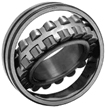 The bare truth about bearings
The bare truth about bearings
August 12, 2014 REDWIRE is news you can use from leading suppliers. Powered by FRASERS.
Posted by Motion Industries Canada
A leading distributor of quality products and services to 150,000 government and industrial customers in North America,... Read more
Subscribe
Free REDWIRE e-newsletter

Everyday items such as inline roller skates, washing machines, even the Lazy Susan you use to pass the potatoes during your family dinner, benefits from the functionality of bearings.
A bearing is a simple yet durable mechanism that commonly consists of a spherical ball and rings made of metal, which work together to rotate or to roll objects in a linear motion.
If you already know the dimensions of what the bearing will be used for (i.e. you have calculated the outer diameter and the shaft diameter) you are already one step ahead.
Get your bearings straight and learn about the types of bearing loads to ensure that your selected bearings can pull its own weight for your specific industrial application.
Separating fact from friction
Bearings decrease friction between two items to enable objects to have smooth moves.
While it is true that the ball takes the brunt of the load, with the power of the weight driving the bearing to roll or to rotate, remember that all loads are not created equal.
A weight to bear: push or pull loads
Bearing loads are categorized into two main types: thrust bearing and radial bearing.
Think of thrust bearing loads as a “push” type of load: the weight of the load moves parallel to the rotational axis.
Imagine sitting on your favourite barstool at the corner pub; the load comes completely from the weight that is pushed on the seat of the stool.
Radial bearing loads are a kind of “pull” load: the weight of the load moves perpendicular to the rotational axis.
Next time you’re standing in a crowded elevator, escape your surroundings by thinking of how the motor and pulley system pulls the elevator up or down. The load originates from the tension of cables connected by the pulleys of the elevator car.
But, bear in mind there are also push and pull loads
Push-pull types of loads are thrust and radial bearing loads that occur simultaneously.
When you drive down the street, your car tires are moving in a radial (or straight) direction.
But once you see a detour sign that indicates to make a right-hand turn, turning the corner transfers the stress of the tire bearings to one side, which is subject to a thrust bearing load.
Take a load off your mind and come see us for all your industrial bearing needs
Serving North American markets for 70 years, Motion Industries Canada continues to be a world-class distributor of custom precision and replacement parts.
Above and beyond this satisfying achievement, we’re most proud of our superior customer service excellence, which is at the foundation of our commitment to our customers, our suppliers and to our community.
We’re dedicated to empower our employees in adopting best practices in social, ethical and environmental standards in our work as socially responsible corporate citizens.
Stop over and say hello or get schooled with our expansive knowledge hub of our products, services and network of leading suppliers at www.motionindustries.com.
Share
Posted by Motion Industries Canada
A leading distributor of quality products and services to 150,000 government and industrial customers in North America,... Read more